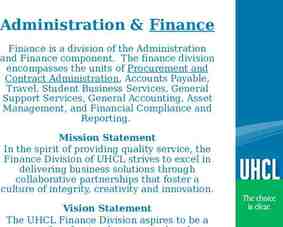Learning about Reverse Mortgage for Purchase HECM Purchase
30 Slides4.90 MB
Learning about Reverse Mortgage for Purchase HECM Purchase Learning Objectives Section 1: Introduction to the HECM Section 2: How the Program Works Section 3: Eligibility Section 4: The Process Section 5: Statistics Section 6: Proprietary Product Section 7: Financial Assessment HECM for Purchase Scott Underwood Vice President New South Reverse Mortgage Division 12 Years in Reverse Mortgage Industry Scott’s NMLS # 206339 NSM NMLS # 1018333
Reverse Mortgage Basics The following items apply to ALL HECM borrowers: All borrowers must be 62 years old, or older. All borrowers must be U.S. citizens or legal residents. At least one borrower must live in the property as his or her primary residence. The property must be owner-occupied. All borrowers must receive counseling. The reverse mortgage professional provides a list of 12 counseling agencies to the borrower. In addition: The maximum claim (or home value max) amount is 625,500 HECMs are federally insured. 800.288.
The Traditional HECM The Home Equity Conversion Mortgage (HECM) is commonly known as a “reverse mortgage.” It is a government-insured loan that allows homeowners who are 62 and older to convert some of their home equity into tax-free cash. IMPORTANT: This is NOT tax advice. Consult a tax professional. Homeowners continue to live in and OWN their homes. There are no monthly mortgage payments. Note: The loan must be repaid if the borrower does not meet loan obligations, including taxes and insurance, as well as property upkeep and maintenance. HECMs are government-insured. Housing and Economic Recovery In 2008, the Housing and Economic Recovery Act (HERA) was passed. It includes provisions, such as: Origination fee limitations Cross-selling limitations Independence of counselors from lenders HECM for Purchase program
HECM for Purchase The HECM for Purchase might be appropriate for borrowers who: Are downsizing, moving to a one-level home, or require handicap access. Want to be closer to their children or grandchildren. Are moving to a 55 community. Wish to purchase a new home without having a monthly payment. Live in a neighborhood that is more social, or which provides easier access to shopping, medical care or other amenities. More facts about the HECM for Purchase: Builders and real estate agents can use this product to sell more properties. HECM for Purchase loans have the same products, limits, LTVs, rates, and servicing fees as a traditional HECM. The borrower must make some investment toward the purchase. HECM for purchase loans only apply to owner-occupied, primary residences.
HECM for Purchase HECM reverse mortgages can now be used to BUY a home. This can make the purchase of a home easier and more affordable for your clients who are age 62 or older. And, it can help you tap into a currently under-served market. Current home New home
Market Opportunity 10,000 people turn 65 every day! In 2011, nearly 500,000 households of homeowners in the age 62plus bracket moved to different homes. This number will continue to rise, now that the Baby Boomer generation has begun to enter retirement. This presents a new and growing market of potential clients who can benefit by selling their current homes and moving into new ones. How Realtors Can Benefit Retiring Boomers are choosing to maintain a comfortable lifestyle in a home that better fits their needs. This opens up a huge market of potential clients who can benefit from selling their current home and purchasing another for retirement. This could help you: Increase your listings Produce more sales Expedite closing More opportunity to work with builders in your community, especially in the 55 housing options.
How the Program Works Instead of paying all cash or taking out a traditional mortgage, buyers use a HECM to finance part of the purchase price. This significantly reduces the amount of out-of-pocket funds buyers must bring to the table. Buyers can save and invest more of their proceeds from the sale of their current homes. At closing, they only bring the difference between the reverse mortgage proceeds and the sale price. There are no monthly mortgage payments, and the loan does not need to be repaid unless: o The borrower sells the home. o The home is no longer the primary residence of at least one of the borrowers. o The borrower does not meet loan obligations, such as taxes, insurance or property maintenance. o Strategy: HECM for Purchase o A HECM for Purchase loan can help clients “right-size” to a home that better suits their lifestyle. Instead of paying all cash, or taking out a traditional mortgage, they use a reverse mortgage to finance part of the purchase price – but with no monthly payments. o This helps them spend less money out of pocket, and may help them more comfortably afford a home upgrade.
Strategy: HECM for Purchase A 70-year-old couple sell their home for 500,000, and purchase a new home for 350,000. They do not want any monthly mortgage payments. Downsizing Without a HECM for Purchase Sale price (old home) 500,000 8% closing costs -40,000 Net Proceeds 460,000 New Home Price 350,000 Funds remaining 110,000 Downsizing with Liquidity With a HECM for Purchase Sale price (old home) 500,000 8% closing costs -40,000 Net Proceeds 460,000 New Home Price 350,000 HECM for Purchase 180,543 Down payment 169,457 (from proceeds) Funds remaining 290,543
Strategy: HECM for Purchase A 70-year-old couple sell their home for 500,000, and purchase a new home for 700,000. They do not want any monthly mortgage payments. Upsizing Without a HECM for Purchase Upsizing with Liquidity Sale price (old home) 500,000 Sale price (old home) 8% closing costs Net Proceeds -40,000 460,000 New Home Price 700,000 Funds required 240,000 With a HECM for Purchase 8% closing costs 500,000 -40,000 Net Proceeds 460,000 New Home Price 700,000 HECM for Purchase 335,803 Down payment (from proceeds) 364,197 Funds remaining 95,803
Program Advantages The advantages of a HECM for purchase loan include: Buyers spend less money out-of-pocket, and can more comfortably afford an upgrade. They have the option to include a HECM line of credit as part of the loan, which borrowers can tap into as needed. Borrowers can preserve assets to help fund a long retirement. No FICO score is required, though the borrower must have satisfactory credit and property charge payment history. There are no employment requirements, though borrowers must meet or exceed the required residual income. Borrowers pay NO monthly mortgage payments for as long as they live in the home.
Why an MIP/Insurance fund? The original statute of the National Housing Act of 1987 required a guarantee to borrowers that they would be protected against disappearance of their lender and obligations beyond the value of their home at sale by the General Insurance Fund. The insurance is now referred to as the Mutual Mortgage Insurance Fund. The insurance is generally funded within the closing costs of the HECM loan as an upfront fee. It is also a percentage of the annual outstanding balance. Financial Implications The proceeds from a reverse mortgage are not considered to be income, and should not typically impact borrower eligibility for: Property Tax Medicare Medicaid* Social Security Income (SSI)* *Borrowers should consult with a tax consultant and/or an accountant to review eligibility for all such programs with the granting agencies or independent experts. Because HECM proceeds are not considered income, there are no taxes on the proceeds.
Property Eligibility The property being purchased must: Meet Federal Housing Administration (FHA) property standards and flood requirements. Be one of the following property types: oSingle-family home oHUD/FHA-approved condominium oManufactured home that meets certain requirements oTwo-to-four unit properties oIneligible Properties oIneligible properties include: oCooperative units (Co-ops) oNew construction with no Certificate of Occupancy, or its equivalent, prior to submission of the HECM application oBoarding houses oBed-and-breakfast properties oExisting manufactured homes that: oWere built before 7/ 15, 1976 oHave moved or otherwise do not meet all FHA and FAR standards oCondominium units that are not HUD/FHA-approved. oNote: Ask your FAR Representative for resources regarding obtaining FHA condo approval (in some instances there may be an option).
Borrower Eligibility All borrowers must be age 62 or older. Eligible non-borrowing spouses receive protection from losing the home should the borrower predecease them. A non-borrowing spouse is permissible, but we factor his or her age into to the calculations. Mandatory HUD counseling is required. The home must be the primary residence and the owner must occupy it within 60 days of closing. Borrowers own the property and as such are responsible for paying all property charges. Borrowers must bring the difference between the purchase price of the home and the HECM proceeds to the closing table.
Principal Limit Factors Principal Limit Factors are similar to loan-to-value (LTV) ratios. They are different in that the age is factored in. Principal Limit calculations determine the amount of loan proceeds available to the borrower. These calculations include: Age of the youngest borrower, or eligible non-borrowing spouse Product type Expected interest rate The LOWEST of: o Appraised value o Sales price o Maximum Claim Amount
The Process After borrowers decide to purchase a more desirable home, a real estate agent can sell their existing home, determine the purchase price Clients must participate in an information session with an independent, HUD-approved counselor, in person or by phone, BEFORE completing an application. range, and identify properties of interest CounselingThe Process, Application cont. . The client applies for the HECM, and provides the signed and dated counseling certificate. Effective, April 27, 2015, all prospective borrowers must undergo a financial assessment to ensure they can meet their loan obligations. Financial Assessment Processing Closing Property appraisal, processing and approval are similar to a traditional mortgage.
Repayment Usually the last surviving borrower or the estate sells the home to repay the loan. The loan can also be repaid in cash from any source, such as other assets, proceeds from a life insurance policy, or a loan refinance. No debt is passed along to heirs, and there is no personal liability. Once the loan is repaid, any remaining equity belongs to the homeowners or their heirs. It’s About Lifestyle Today’s buyers want the whole package Work and volunteering Family and friends Appropriate maintenance-free housing Green, energy-efficient property Remember that buyers buy emotionally and justify logically. Most will not move unless they’re shown how.
Approximate Down Payment Note: These figures are subject to change due to birthdate and interest rate.
Amortization The amortization schedule is a year-by-year analysis of the reverse mortgage loan balance and fees over time. Since payments are never required, interest and mortgage insurance accrue to make the loan balance grow. The amount the borrower owes on the loan, and the equity, change over time, as the property typically appreciates. Even if the loan balance exceeds the property value over time, the mortgage insurance protects the federal government against any deficiency due on the loan.
Amortization, cont.
Financial Advisors Increasingly, some advisors and some financial advisory firms are beginning to view reverse mortgages as an important part of the retirement planning process, particularly since a set of reforms were imposed by the Federal Housing Administration and the Department of Housing and Urban Development in 2013. Source: Financial Planning, “Reversal of fortune: Home Equity makes a comeback for retirees”
Realtors When it comes to selling a home secured by a Home Equity Conversion Mortgage, open lines of communication between reverse mortgage servicers and Realtors are key to a successful transaction, according to several HECM and real estate industry professionals. Source: Reverse Mortgage Daily, “What Realtors should know when selling a home with a Reverse Mortgage”
Studies on Reverse Mortgages Active Studies on Reverse Mortgages include: Rand Corporation Ohio State University George Washington University Wade Pfau –Retirement Researcher Federal Reserve Bank AARP Columbia Business School Wall Street Journal National Information Centre on Retirement Investments Did you know other countries that offer Reverse Mortgages are: Canada Australia India Japan China Taiwan England Germany Spain Sweden Finland France Korea
Historical Changes – Home Equity Prepared by RiskSpan, Inc. Data sources: American Community Survey, Census, FHFA, Federal Reserve
Historical Changes – Home Values Prepared by RiskSpan, Inc. Data sources: American Community Survey, Census, FHFA
Demographics The number of older Americans aged 65 is projected to increase from 43 million in 2012 (12.9% of the population) to 84 million in 2050 (20.9% of the population). The projections indicate that there will be 92 million older Americans in 2060. This means there are increasing numbers of eligible borrowers in the marketplace. Source: American Century Investment Blog at AmericanInvestmentblog.com
Geographic Distribution The population of those 65 and older has particularly increased in certain areas. The darker the blue, the higher the increases in those states.
Financial Assessment Purpose Mortgagee Letters 2014-21 and 2014-22, which included the HECM Financial Assessment and Property Charge guide, were issued on November 10, 2014. FAR uses the Financial Assessment (FA) to evaluate whether a borrower qualifies for the HECM loan, and under what conditions. The FA specifically looks at “willingness” and “capacity” of the borrower to meet his or her financial obligations and meet HECM requirements. Willingness: Past performance and credit history. Capacity: Using income, assets and expenses to calculate residual cash flow. Financial Assessment became effective, industrywide, on April 27, 2015. A complete financial analysis of each HECM borrower is a condition of HECM approval. HECM borrowers verify and document the following: Credit history and property charge payments Income and Assets Expenses Residual Income We collect the borrower’s authorization to verify the information we need to perform the FA. This includes a Non-Borrowing Spouse (NBS) or Other Non-Borrowing Household Member’s (ONBHM) authorization, whenever necessary.
Credit History We use the credit history analysis to determine if the borrower has demonstrated responsibility in managing the following: Debt Finances Payment of taxes and insurance We consider the following in the borrower’s overall pattern of credit behavior: There are no tax arrearages in the last 24 months prior to loan application. All property charges are current at application. Homeowner insurance (and flood insurance, if applicable) was in place for a minimum of 12 months prior to the date of application, and the borrower has a satisfactory history of maintaining it. FAR determines if the borrower paid insurance and taxes directly. There is a satisfactory payment history on mortgages, installment accounts and revolving.
Retirement Supplements
Summary In summary, a HECM for Purchase is a great alternative for people age 62 and older, as opposed to traditional mortgages. We have shown you marketing opportunities, how the program works, and statistical analysis. Financial Assessment is a safeguard for both the borrower and lender. For those with higher valued homes they are not limited to the HECM product. The HomeSafe proprietary product allows borrowers to tap into more equity and, although it is not government-backed, it is still a non-recourse loan. Don’t miss out on your opportunity! Scott Underwood - Vice President - Reverse Mortgage Retail Division 205.908.2993, 256.677.9767, 251.279.9085 ReverseMortgageAlabama.com



































